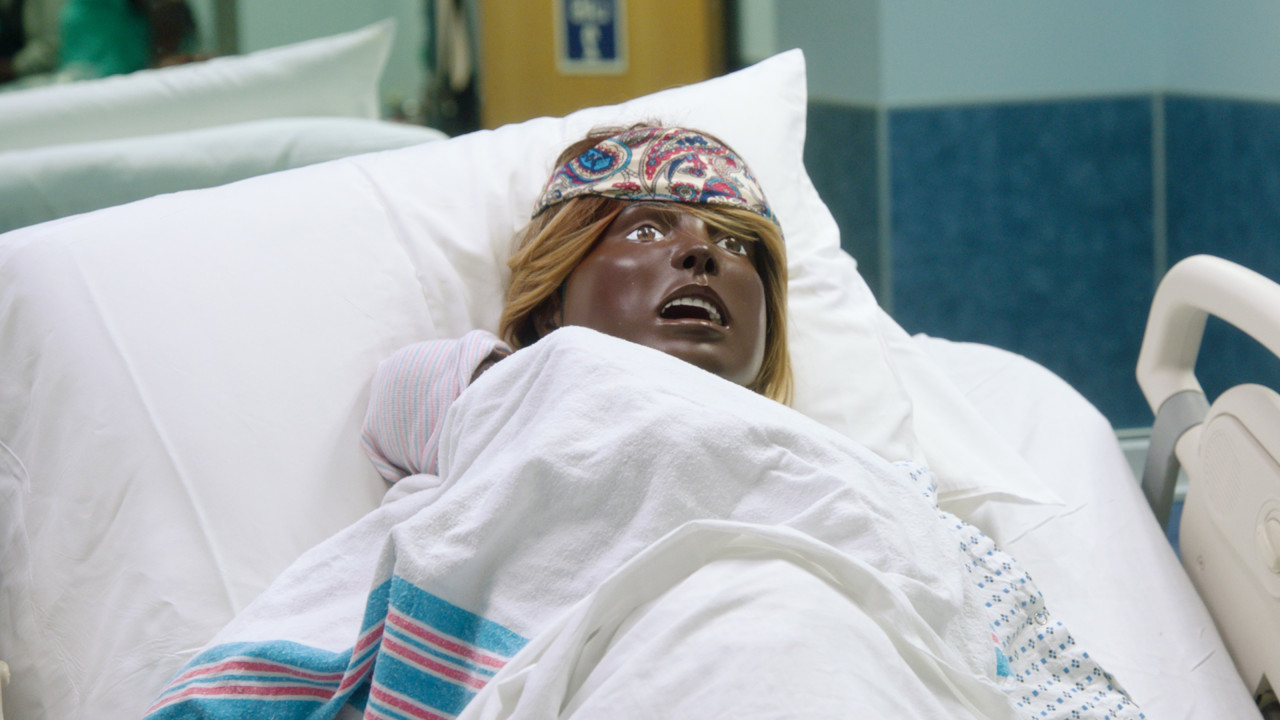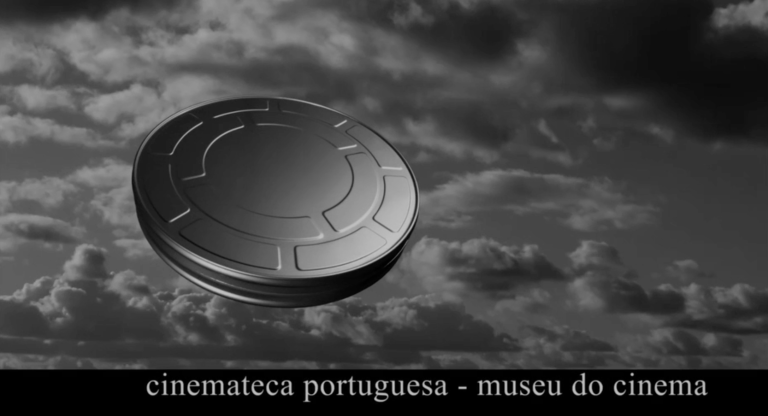Carolyn Lazard’s new exhibition at Artist’s Space is full of blue. The walls, floor tiling, medical equipment, and staff uniforms in Elmhurst Hospital, where Lazard shot Vital (2025) and Fiction Contract (2025), all share the same muted tone. And it is through the architecture of the hospital that Lazard addresses how American medical institutions control sickness and health.
Two-way’s visitors will first encounter Borne (2025), a reproduction of the hospital’s blue-and-white linoleum tile flooring, flanked by two videos on either end of the gallery. Vital’s protagonist (played by Martine Syms) navigates a series of disappointments during their first prenatal visit: their gynecologist cancels the appointment, the doctor’s replacement dismisses their questions, and their insurance unexpectedly denies coverage. All the while a hospital drama plays on low volume in the waiting room, gesturing at the divide between representations of hospitals; one appears as a spectacular narrative device, and the other as an institution involved in banal types of bureaucratic violence.
Derek Jarman famously pondered on the color blue in his 1993 film of the same name, which features a static shot of International Klein Blue (IKB) alongside the artist’s ruminations on his own vision loss and the AIDS epidemic. For both Jarman and Lazard, color cannot dissolve material conditions; rather, aesthetics define our relationship to bureaucracy. Blue was, after all, introduced into hospitals partly due to its contrast with blood, and to remedy surgeons’ eye strain. Syms’s crimson shirt, carefully folded and set on the examination chair, re-stages this juxtaposition between blue and blood red.
While Vital is a fictional account of medical bureaucracy, Lazard’s authorial position in Fiction Contract is less pronounced. The piece documents a real-life simulated birth scenario facilitated by an all-black team of medical staff, actors performing as patients, and a mechanized birthing mannequin named Jayda. Jayda is the outcome of a 2020 plan from former Mayor Bill de Blasio’s administration that incentivized the manufacturing of black birthing dolls. Lazard records the scenario from both sides of a two-way mirror separating the birthing suite and adjoined control room. A paid actor voicing Jayda is seen in the latter and participates through a microphone. Lazard’s focus on the two-way mirror is compounded by intermittent shots of monitoring cameras in the corners of the birthing room, used for reviewing and observing medical simulations. Both technologies are popularly used by the police and attest to the surveillance inherent to the hospital itself. Jayda’s gaze is haunting as she stares, unblinking and mouth agape, at the ceiling, her sister cooing congratulations on the hard-fought achievement of bringing a child into this world.
Altogether, Two-way proves a captivating exercise in both reproduction and iteration, the latter of which Lazard describes as their primary artistic medium. In this depiction of childbearing, the artist and hospital share an interest in reproducing objects of desire: healthy children and parents, reliable doctors and social bonds, and art. Rejecting the notion of the perfect copy—from parent to child or simulation to real-life—Lazard scrutinizes the centrality of aesthetics within the state’s regulation of outcomes related to the American health project. They suggest there is always something being “played out.” I sat in the gallery watching each video in a seamless loop, wondering if something different might happen next time.
Carolyn Lazard: Two-way is on view through May 10 at Artist’s Space.


